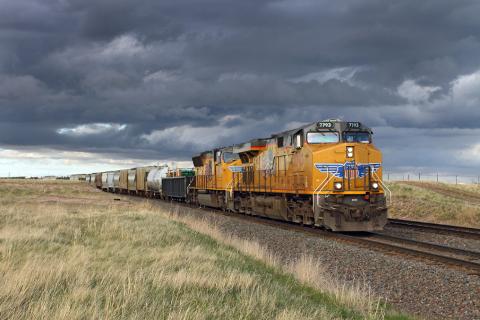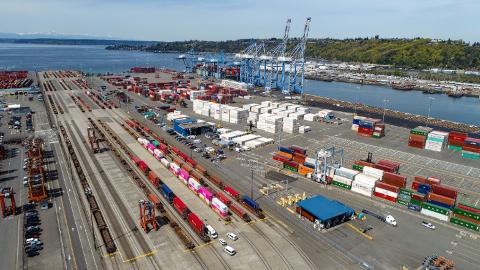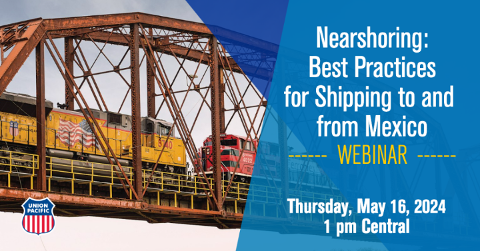If you have ever visited Europe or Asia and traveled on widely popular high-speed passenger trains, you may get the impression the best railroads exist outside the United States.
Yes, many countries utilize rail networks for large-scale passenger transportation. What’s more, some foreign passenger trains can travel up to 200 miles per hour! While passenger rail service is available in the U.S., you won’t see high-speed trains carrying people to the same extent as in some other countries.
What will you see? A safe, reliable and efficient freight rail network that is the envy of the world. When it comes to effectively shipping the goods that families use every day, the supplies businesses need to grow and the products fueling our international trade, the U.S. freight rail transportation system is second to none.
What Makes the U.S. Different?
Why is America’s freight rail network the best of the best? Ownership and geography are the major factors that set U.S. freight rail apart from other countries.
Ownership
Unlike most foreign railroads, American railroads, for the most part, are privately owned rather than government owned or operated. Why is this a big deal? Being privately owned allows America’s freight railroads to raise billions of dollars in private capital to fund maintenance and expansion (averaging about $25 billion over the past five years) instead of relying on taxpayer funding. With this consistent source of resources available, our freight rail industry is equipped to quickly adapt and serve the transportation needs of just about every business sector in the U.S., supporting economic growth and overall quality of life.
Geography
The vast geography of the United States has only limited regional population density resembling areas served by foreign passenger rail networks. With more than 28,000 locomotives, 1.6 million rail cars and freight rail lines spanning across 140,000 miles, America’s freight rail system is perfectly positioned to be the most efficient and cost-effective transportation network covering the 3.12 million square miles of the continental U.S.
Benefits of U.S. Freight Rail

U.S. railroads keep America moving, connecting communities, generating opportunities and supporting growth and success across the country.
In the U.S., we are lucky to enjoy many benefits that come along with our top-notch freight rail network. Countries without an expansive freight rail network are forced to make tough shipping decisions on how to meet the needs of growing business and industry — largely leaving them to ship most of their freight by truck on increasingly crowded highways. Here’s a rundown of what makes other countries a little envious:
Top Efficiency
American railroads move more than 5,000 ton-miles of freight per person per year. That’s compared to 500 ton-miles per person in Europe and less than 170 ton-miles per person in Japan. In other words, our railroads can move more freight at one time, while other countries rely more heavily on trucks to ship goods from point A to point B. Not only can trains move a lot of freight at one time, they are also one of the most fuel efficient means of freight transportation — allowing businesses to use their transportation dollars effectively.
Environmental Advantages
A healthy environment is an essential foundation for a strong country and a vibrant economy. On average, trains are three to four times more fuel efficient than trucks. That means moving more freight by rail rather than truck reduces greenhouse gas emissions by up to 75%. Those emissions are directly related to fuel consumption. For example, on average, Union Pacific Railroad moves one ton of freight 444 miles on a gallon of diesel fuel. When you think about other countries that may rely more heavily on trucks, they could be missing out on major fuel savings and the ability to significantly reduce greenhouse gas emissions. Plus, by having the option to ship their freight by rail, U.S. companies are better able to reduce their carbon footprint and create meaningful global change.
Positive Economic Impact
U.S. railroads keep America moving, connecting communities and resources, generating opportunities and supporting growth and success across the country. According to the Surface Transportation Board, railroads employ more than 100,000 people in the U.S., which, in turn helps to generate more dollars in economic activity, ensuring a bright future for businesses and American families. The international trade strength of the United States is also supported by a freight rail network that connects sellers and buyers to markets around the world.
Safety First
The U.S. rail industry continuously works to improve processes and invests in new technologies to ensure the network is the safest in the world. According to the AAR, since 2000, America’s Class I railroads have spent $439 billion on network maintenance and capital expenditures, while the train accident rate dropped 34%. These investments also fund new inspection technologies to monitor and maintain infrastructure, including bridges, rail lines, locomotives and rail cars.
Learn More
Taking a look at the many advantages America’s freight rail network provides businesses and communities, it is clear to see why it is the envy of many countries across the globe. With world-class transportation solutions right in your backyard, rail is a great shipping option that could benefit your business in many ways. If you are interested in learning more about moving your freight by rail, give us a shout, and we will put you in touch with a shipping expert.
Related Articles









